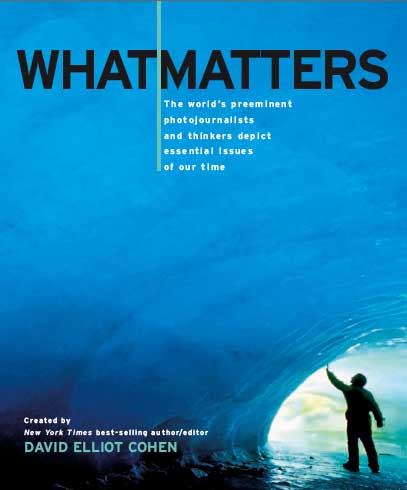Crescent and Delta?(published Oct 2008)
The Bangladesh Story
by David Urch
Edited by John Clarke
 Proceeds of the sale go to the University of Buckingham?Bangladesh Scholarship
Proceeds of the sale go to the University of Buckingham?Bangladesh Scholarship
In 2007 the media gave comprehensive coverage to India?and Pakistan on the 60th anniversary of independence.? Nothing?was said about East Pakistan, now Bangladesh. Crescent and Delta redresses this injustice.
This? is the story of Bengal; now at last a state that can enjoy independence and, free of exploitation, be allowed to enjoy its beauty and natural riches. By no means free of problems, many caused by globalisation and climate change, the state of Bangladesh has a last its destiny in its own hands.
David Urch?s vivid narrative tells the history but also evokes the people and the place describing the long history of outside influence that has created modern Bangladesh. Despite centuries of external domination the Bangladeshis remain a proud and unique people and able at last to benefit themselves from their own rich and diverse country.
ISBN 0955464242
RRP ?20.00
What Matters
The World?s Preeminent Photojournalists and Thinkers Depict Essential Issues of Our Time
Sterling. 2008. 335p. ed. by David Elliot Cohen. photogs. index. ISBN 978-1-4027-5834-8. $27.95. POL SCI
PHOTOGRAPHY EXPOSES TRUTHS, advances the public discourse, and demands action. In?What Matters, eighteen important stories by today?s preeminent photojournalists and thinkers poignantly address the big issues of our time?global warming, environmental degradation, AIDS, malaria, the global jihad, genocide in
Darfur, the inequitable distribution of global wealth and others. A ?What You Can Do? section offers 193 ways to learn more and get involved.
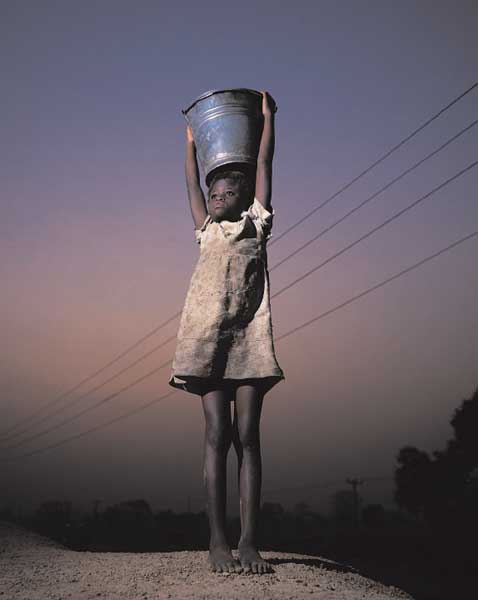
Back cover inset by BRENT STIRTON: A four-year-old girl in Ghana walks two-and-a-half miles (four kilometers) twice each day to fetch buckets of water for her family
Photographed by:
Shahidul Alam ??The Associated Press ??Gary Braasch ??Marcus Bleasdale ??Raymond Depardon ??Paul Fusco ?Lauren Greenfield ??Maggie Hallahan ??Ed Kashi ??Gerd Ludwig ??Magnum ??Susan Meiselas ??James Nachtwey ?Shehzad Noorani ??Gilles Peress ??Sebasti?o Salgado ??Stephanie Sinclair ??Brent Stirton ??Tom Stoddart ?Anthony Suau ??Stephen Voss
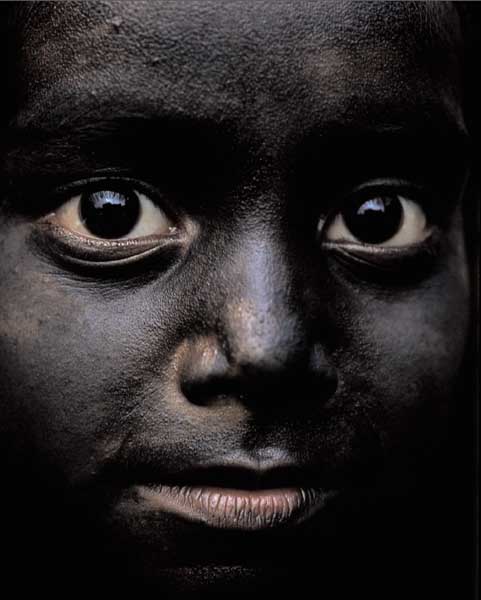
SATHI?S FACE is covered with carbon dust from recycled batteries. She is eight years old and works in a battery recycling factory in Korar Ghat, on the outskirts of Dhaka, Bangladesh. ? Shehzad Noorani/Drik/Majority World
Commentary by:
Omer Bartov ? Judith Bruce ? Awa Marie Coll-Seck ? Richard Covington ? Elizabeth C. Economy ? Helen Epstein ? Fawaz A. Gerges ? Peter H. Gleick ? Gary Kamiya ? Paul Knox ? David R. Marples ? Douglas S. Massey ? Bill McKibben ? Samantha Power ? John Prendergast ? Jeffrey D. Sachs ? Juliet B. Schor ?
Michael Watts
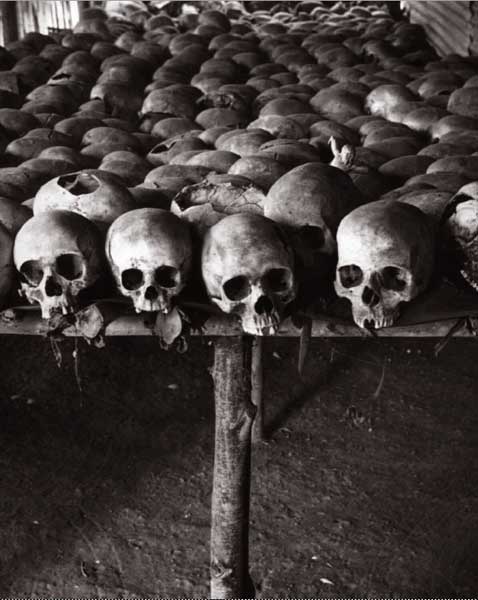
A MEMORIAL to the 1994 Rwanda genocide at the Church of Ntarama, in Kigali Province. ? Raymond Depardon
What Matters?an audacious undertaking by best-selling editor and author?David Elliot Cohen?challenges us to consider how socially conscious photography can spark public discourse, spur reform, and shift the way we think. For 150 years, photographs have not only documented human events, but also changed their course?from Jacob Riis?s expos? of brutal New York tenements to Lewis Hine?s child labor investigations to snapshots of torture at Abu Ghraib prison. In this vein,?What Matters presents eighteen powerful stories by this generation?s foremost photojournalists. These stories cover essential issues confronting us and our planet: from climate change and environmental degradation to global jihad, AIDS, and genocide in Darfur to the consequences of the Iraq war, oil addiction, and the inequitable distribution of global wealth. The pictures in?What Matters are personal and specific, but still convey universal concepts. These images are rendered even more compelling by trenchant commentary.?Cohen asked the foremost writers, thinkers, and experts in their fields to elucidate issues raised by the photographs.
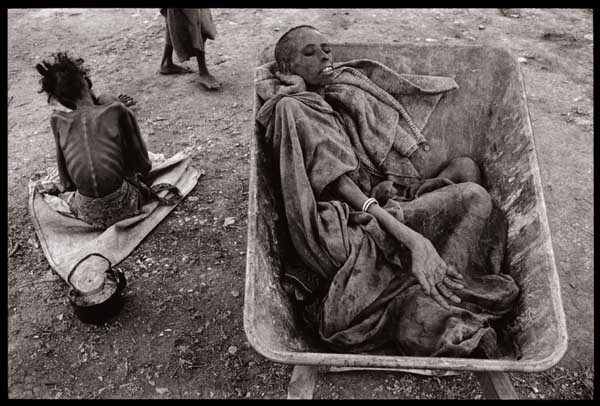
A WOMAN TAKEN to an emergency feeding center in Somalia established by the Irish charity CONCERN waits for food and medical attention. ? James Nachtwey.
Some stories in What Matters will make you cry; others will make you angry; and that is the intent.?What Matters is meant to inspire action. And to facilitate that action, the book includes an extensive ?What You Can Do? section??a menu of resources, web links, and effective actions you can take now.
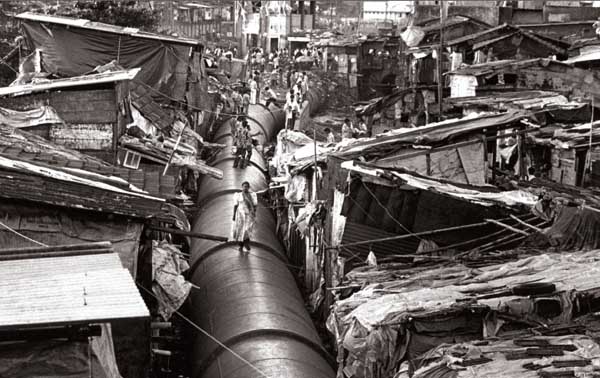
A PIPELINE carrying drinking water to more prosperous districts of India?s largest city, Mumbai (population 20 million), passes through the shantytown of Mahim, where it serves as an impromptu thoroughfare. ? Sebasti?o Salgado.
Cohen hopes?What Matters will move people to take positive steps??no matter how small??that will help change the world. As he says in his introduction, the contributors? work is so compelling that ?if we show it to you, you will react with outrage and create an uproar.? If, says?Cohen, you look at these stories and think, ?What?s the use? The world is irredeemably screwed up,? we should remember that, historically, outraged citizens have gotten results. ?We did actually abolish slavery and child labor in the US; we abolished apartheid in South Africa; we defeated the Nazis; we pulled out of Vietnam. As the saying goes, ?All great social change seems impossible until it is inevitable.? ?
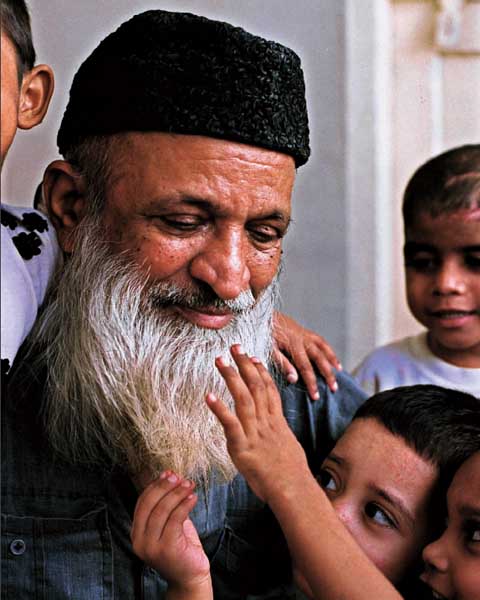
PHILANTHROPIST Abdul Sattar Edhi with a few of the many thousands of children he has helped. Shahidul Alam/Drik/Majority World
– Michael Zajakowski,?Chicago Tribune
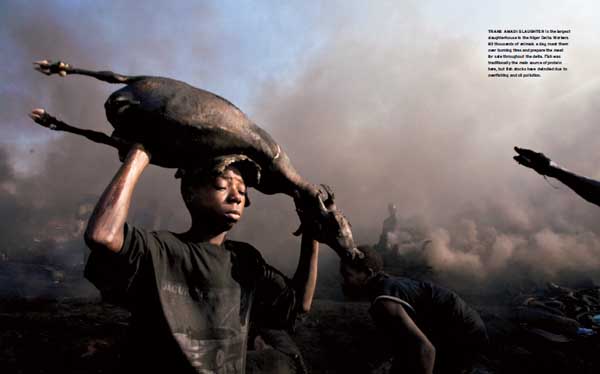
TRANS AMADI SLAUGHTER is the largest slaughterhouse in the Niger Delta. Workers kill thousands of animals a day, roast them over burning tires and prepare the meat for sale throughout the delta. Fish was traditionally the main source of protein here, but fish stocks have dwindled due to overfishing and oil pollution. ? Ed Kashi
A. Newspapers and Online
1. Hard to see, impossible to turn away – Issues and images combine in ?What Matters,? a powerful and passionate new book
?Great documentary photojournalism, squeezed out of mainstream newspapers and magazines in an age of shrinking column inches, has had a hard time gaining traction in other venues? But nobody has told the 18 photographers in ?What Matters: The World?s Preeminent Photojournalists and Thinkers Depict Essential Issues of Our Time.? These are photo essays by some of today?s best photojournalists following the great tradition begun over a hundred years ago with the expos?s of New York tenement life by Jacob Riis. Through the doggedness of these photographers?who are clearly committed to stirring us out of complacency?all the power and passion of the medium is evident in this book? Some of the pieces will break your heart, some will anger you. All will make you think. To channel your thoughts and feelings into action, the book ends with an appendix ?What You Can Do,? offering hundreds of ways to be a part of the solution to these problems.?
-?Chicago Tribune Book Review, 2 page spread
2. ?Must viewing.?
-?San Francisco Chronicle, 2 page story
3. Photographs that Can Change the World
?David Elliot Cohen?s new book, What Matters, which hits bookshelves today, is a collection of photo essays that explore 18 distinct social issues that define our time. Shot by the world?s most renowned photojournalists, including James Nachtwey, who has contributed to V.F., the photographs explore topics ranging from genocide and global warming to oil addiction and consumerism, offering a raw view into the problems that plague our world. Each photo essay is accompanied by written commentary from an expert on the issue. Cohen hopes the book will inspire people to work toward resolving these problems. ?Great photojournalism changed the world in the past, and it can do it again,? Cohen says. ?I want people to see these images, get angry, and act on that anger. Compelling images by the world?s best photojournalists is the most persuasive language I have to achieve this.?
-?vanityfair.com
4. Book Review: What Matters
?Changing the world might sound like a lofty goal for a photo book, but that?s what the new book, What Matters, The World?s Preeminent Photojournalists and Thinkers Depict Essential Issues of our Time edited by David Elliot Cohen (Sterling Publishing, $28, 2008), hopes to do. Citing the power of socially conscious photographers over the last 150 years, the beautiful collection of 18 photo-essays by some of today?s prominent photojournalists hopes to ?inform pre-election debate and inspire direct action.? Regardless of what side of the political fence you sit on, this collection of heartbreaking and powerful stories and images is guaranteed to get you thinking.?
-?Popular Photography
5. What Matters: The World?s Preeminent Photojournalists and Thinkers Depict Essential Issues of Our Time.
Those doubting the power of photojournalism to sway opinion and encourage action would do well to spend some time with this book. In 18 stories, each made up of photos by leading photojournalists and elucidated by short essays by public intellectuals and journalists, this book explores environmental devastation, war, disease, and the ravages of both poverty and great wealth. The photos are specific and personal in their subject matter and demonstrate how great photography can illuminate the universal by depicting the specific. Cohen has a goal beyond simply showcasing terrific photography. In his thoughtful introduction, he makes explicit his aim to connect the work compiled here with the great tradition of muckraking photography that helped to change conditions in New York tenements and to end child labor at the turn of the last century. A terrific concluding chapter directs readers to specific actions they can take if they are moved to do so by the book?s images, and it?s hard to imagine the reader who would not be moved. Highly recommended for public libraries and academic libraries supporting journalism and/or photography curricula. (a starred review in Library Journal generally means the book will be acquired by many libraries.)
-?Library Journal
6. First of five part series about What Matters
(The first installment drew 500,000 page views)
-?CNN.com
7.?Second part in CNN. Black Dust by Shehzad Noorani
